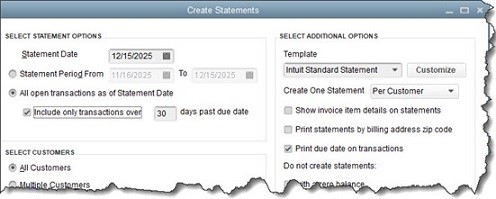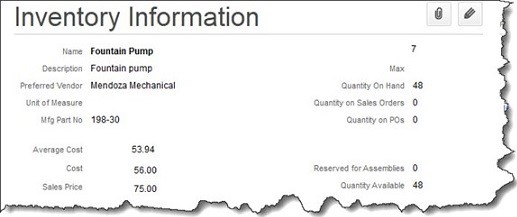January 2022 Individual Due Dates
January 3 – Time to Call For Your Tax Appointment –
January is the beginning of tax season. If you have not made an appointment to have your taxes prepared, we encourage you to do so before the calendar becomes too crowded.
January 10 – Report Tips to Employer –
If you are an employee who works for tips and received more than $20 in tips during December, you are required to report them to your employer on IRS Form 4070 no later than January 10.
January 18 – Individual Estimated Tax Payment Due –
It’s time to make your fourth quarter estimated tax installment payment for the 2021 tax year.
January 31 – Individuals Who Must Make Estimated Tax Payments –
If you didn’t pay your last installment of estimated tax by January 18, you may choose (but aren’t required) to file your income tax return (Form 1040 or Form 1040-SR) for 2021 by January 31. Filing your return and paying any tax due by January 31 prevents any penalty for late payment of the last installment. If you can’t file and pay your tax by January 31, file and pay your tax by April 18 (April 19 if you live in Maine or Massachusetts).
January 2022 Business Due Dates
January 3 – Payment of Employer Share of Social Security Tax from 2020 –
If you are an employer that deferred paying the employer share of social security tax or the railroad retirement tax equivalent in 2020, pay 50% of the deferred amount of the employer share of social security tax by January 3, 2022. The remaining 50% of the deferred amount of the employer share of social security tax is due by January 3, 2023. Any payments or deposits made before January 3, 2022, are first applied against the payment due by January 3, 2023.
January 3 – Payment of the Deferred Employee Share of Social Security Tax from 2020 –
If are an employer that deferred withholding and payment of the employee share of social security tax or the railroad retirement tax equivalent on certain employee wages and compensation between September 1, 2020, and December 31, 2020, you should have withheld and paid those taxes ratably from wages paid to the employee between January 1, 2021, and December 31, 2021. The employer is liable to pay the deferred taxes to the IRS and must do so before January 3, 2022.
January 18 – Employer’s Monthly Deposit Due –
If you are an employer and the monthly deposit rules apply, January 18 is the due date for you to make your deposit of Social Security, Medicare, and withheld income tax for December 2021. This is also the due date for the nonpayroll withholding deposit for December 2021 if the monthly deposit rule applies. Employment tax deposits must be made electronically (no paper coupons), except employers with a deposit liability under $2,500 for a return period may remit payments quarterly or annually with the return.
January 18 – Farmers and Fishermen –
Pay your estimated tax for 2021 using Form 1040-ES. You have until April 18 (April 19 if you live in Maine or Massachusetts) to file your 2021 income tax return (Form 1040 or Form 1040-SR). If you don’t pay your estimated tax by January 18, you must file your 2021 return and pay any tax due by March 1, 2022, to avoid an estimated tax penalty.
January 31 – 1099-NECs Due to Service Providers & the IRS –
If you are a business or rental property owner and paid $600 or more to individuals (other than employees) as nonemployee compensation during 2021, you are required to provide Form 1099-NEC to those workers by January 31. “Nonemployee compensation” can mean payments for services performed for your business or rental by an individual who is not your employee, commissions, professional fees and materials, prizes and awards for services provided, fish purchases for cash, and payments for an oil and gas working interest. To avoid a penalty, copies of the 1099-NECs also need to be sent to the IRS by January 31, 2022. The 1099-NECs must be submitted on optically scannable (OCR) forms. This firm prepares 1099s in OCR format for submission to the IRS with the 1096 submittal form. This service provides both recipient and file copies for your records. A business or individual who is required to file 250 or more information returns (i.e., 1099s and W-2s among others) must file those forms electronically. Please call this office for preparation assistance.
January 31 – Form 1098 and Other 1099s Due to Recipients –
Form 1098 (Mortgage Interest Statement) and Forms 1099, including 1099-NEC (see above) are due to recipients by January 31. The IRS’ copy, other than for 1099-NECs, is not due until February 28, 2022, or March 31, 2022, if electronically filed. These 1099s may be reporting the following types of income:
- Dividends and other corporate distributions
- Interest
- Rent
- Royalties
- Payments of Indian gaming profits to tribal members
- Profit-sharing distributions
- Retirement plan distributions
- Original issue discount
- Prizes and awards
- Medical and health care payments
- Debt cancellation (treated as payment to debtor)
January 31 – Employers – W-2s Due to All Employees & the Government –
EMPLOYEE’S COPY: All employers need to give copies of the W-2 form for 2021 to their employees. If an employee agreed to receive their W-2 form electronically, post it on a website and notify the employee of the posting. GOVERNMENT’S COPY: W-2 Copy A and Transmittal Form W-3, whether filed electronically or by paper, are due January 31 to the Social Security Administration.
January 31 – File Form 941 and Deposit Any Undeposited Tax –
File Form 941 for the fourth quarter of 2021. Deposit any undeposited Social Security, Medicare, and withheld income tax. (If your tax liability is less than $2,500, you can pay it in full with a timely filed return.) If you deposited the tax for the quarter in full and on time, you have until February 10 to file the return.
January 31 – File Form 943 –
All farm employers should file Form 943 to report Social Security, Medicare taxes and withheld income tax for 2021. Deposit any undeposited tax. (If your tax liability is less than $2,500, you can pay it in full with a timely filed return.) If you deposited the tax for the year in full and on time, you have until February 10 to file the return.
January 31 – W-2G Due from Payers of Gambling Winnings –
If you paid either reportable gambling winnings or withheld income tax from gambling winnings, give the winners their copies of the W-2G form for 2021.
January 31 – File Form 940 – Federal Unemployment Tax –
File Form 940 (or 940-EZ) for2021. If your undeposited tax is $500 or less, you can either pay it with your return or deposit it. If it is more than $500, you must deposit it. However, if you deposited the tax for the year in full and on time, you have until February 10 to file the return.
January 31 – File Form 945 –
File Form 945 to report income tax withheld for 2021 on all nonpayroll items, including backup withholding and withholding on pensions, annuities, IRAs, gambling winnings, and payments of Indian gaming profits to tribal members. Deposit or pay any undeposited tax. (If your tax liability is less than $2,500, you can pay it in full with a timely filed return.) If you deposited the tax for the year timely, properly, and in full, you have until February 10 to file the return.



